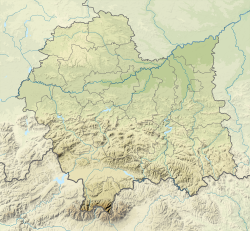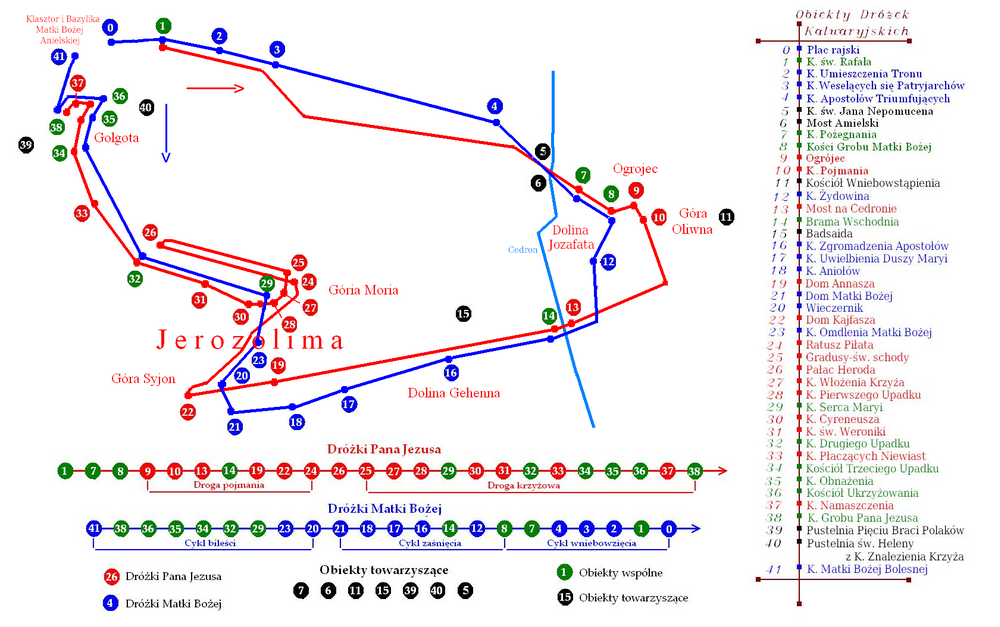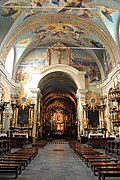You can help expand this article with text translated from the corresponding article in Polish. (March 2009)Click [show] for important translation instructions.
|
| UNESCO World Heritage Site | |
|---|---|
 General view of the monastery | |
 Interactive map of Kalwaria Zebrzydowska Park | |
| Official name | Kalwaria Zebrzydowska: the Mannerist Architectural and Park Landscape Complex and Pilgrimage Park |
| Location | Kalwaria Zebrzydowska, Gmina Kalwaria Zebrzydowska, Wadowice County, Lesser Poland Voivodeship, Poland |
| Criteria | Cultural: (ii), (iv) |
| Reference | 905 |
| Inscription | 1999 (23rd Session) |
| Area | 380 ha (940 acres) |
| Buffer zone | 2,600 ha (6,400 acres) |
| Website | www |
| Coordinates | 49°52′N19°40′E / 49.867°N 19.667°E |
Kalwaria Zebrzydowska Park is a Mannerist architectural and park landscape complex and pilgrimage park, built in the 17th century as the Counter Reformation in the late 16th century led to prosperity in the creation of calvaries in Catholic Europe.
Contents
The park, located near the town of Kalwaria Zebrzydowska, which took its name from the park, was added in 1999 to the UNESCO list of World Heritage Sites. The site is also one of Poland's official national Historic Monuments ( Pomnik historii ), as designated November 17, 2000, and tracked by the National Heritage Board of Poland.












